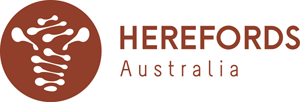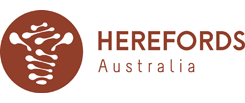A management style driven by commercial profitability has resulted in Hereford producer Jock Nivison being named as a finalist in the NSW Farmer of the Year Award.
Mr Nivison, 34, of Walcha, NSW, is part of the family partnership running the Yalgoo herd of 350 performance recorded cows, a commercial cow herd and a flock of 16,000 Merinos.
The winner of the 2016 Farmer of the Year will receive $10,000 and finalists will each receive $2000. The award is an initiative of NSW Farmers Association and NSW Department of Primary Industries.
As one of Australia’s oldest seedstock operations, Yalgoo has always been at the forefront of performance testing and a pioneer in beef research.
Herd fertility and production is driven by a commercially disciplined approach to management.
Industry best practice is implemented to ensure the fundamental profit drivers of fertility, structural soundness and superior weight gain are maintained.
Mr Nivison said the management team was committed to the implementation of innovative technologies and techniques, and providing economically valuable information to clients.
He said the low bull cost of Herefords had kept him enthused about the breed.
“We are excited about the future of the whiteface breed,’’ he said.
“It’s weight for age, hardiness and temperament are crucial profit driving traits.
“Herefords are becoming much more readily accepted in the market place in terms of carcase and calving ease.
“For me, it is a versatile breed and easy to work with.
“The temperament is a plus, as is the ability to perform under high stocking rates.
“It’s place as half of the most profitable beef animal (Black Baldy) in temperate Australia ensures its market share will increase.
“The Angus breeders bold enough to trial some hybrid vigour will be duly rewarded with increased profitability by using contemporary, high performing Hereford genetics.’’
Yalgoo is one of the few whiteface studs measuring mature cow weights and temperament.
“This is about providing more information for our clients to make an informed decision,’’ Mr Nivison said.
“Mature cow weight affects stocking rate – all our young stock are generally gone before 600 days so we want a high 600 day weight but we don’t want to compromise the stocking rate by running huge cows.
“We want the growth pattern to taper off after 600 days – our mature cow weight has come back a bit and the gap between the two traits is widening.’’
Mr Nivison said the stud’s genetic direction was guided by Group BREEDPLAN’s Grain Fed Index.
The balance of fertility, carcase and growth traits has resulted in the herd rising from breed average to the top 20 per cent in the Index in the past decade, with plans to have the average Yalgoo cow in the top 10 per cent within five years.
“The Grain Fed Index has a little more marbling and that is critical for our clients,’’ Mr Nivison said.
“In the last eight years we have gone from slightly negative marbling to +0.5, and increasing it year-on-year.’’
The herd averages in the top 20 per cent of the breed for 200, 400, 600 day weights, scrotal circumference, eye muscle area and all indexes.
Mr Nivison said visual muscle content was increasing, with an aim to reach B-.
“An increase in visual muscle score equates to an increase in price of 15-20 c/kg across all markets,’’ he said.
Yalgoo has developed an industry best bull warranty to increase transparency around bull failure, and introduced a stock exchange enabling clients to increase competition on their Yalgoo blood stock.
“We realised it wasn’t only production that our clients were getting that was affecting their profitability, cost of production is also a key profit driver,’’ Mr Nivison said.
“We wanted to make sure our bulls were bullet proof to lower their calf costs.’’
Mr Nivision said the breeding program had focused on intramuscular fat percentage to capture market share among Angus breeders.
“Those breeders look to Hereford for weight gain and docility but we also want to make sure the carcase complements the Angus,’’ he said.
“A large part of our clientele are Angus breeders – the Black Baldy is the most profitable animal for temperate Australia through hybrid vigour and weight gain.
“The Black Baldy also benefits from reduced calf costs per bull through the longevity of Hereford bulls.
“Crossbreeding and hybrid vigour have been around since the 1970s but when the black premium came in, people lost focus on what the profit drivers were, with weight being the main one,’’ Mr Nivison said.
“We would like to see that back out there in the public domain.
“Kilograms of beef is the key profit driver in a beef enterprise, not price received, and there is a lot of benchmarking data to back that up.’’
The Nivison family turn off feeder steers from their commercial herd off annual ryegrass into the Whyalla feedlot at 500kg liveweight at 14-15 months.
Steers are also weighed and recorded until they are sold.
Mr Nivison lists his father, Grant Nivison, and cattle consultant Dr Phil Holmes as personal mentors.
“The exciting thing about Herefords is there are a good number of breeders pushing in the same direction to increase market share,’’ he said.





